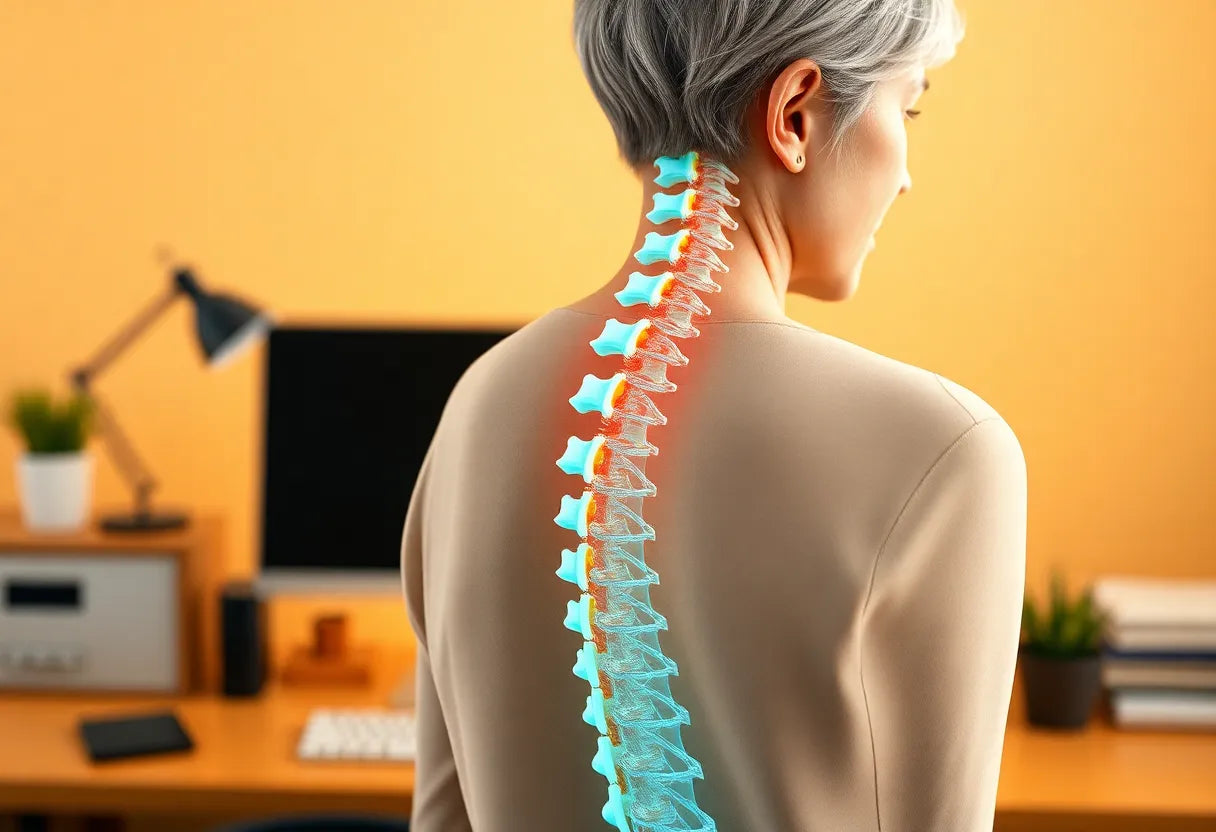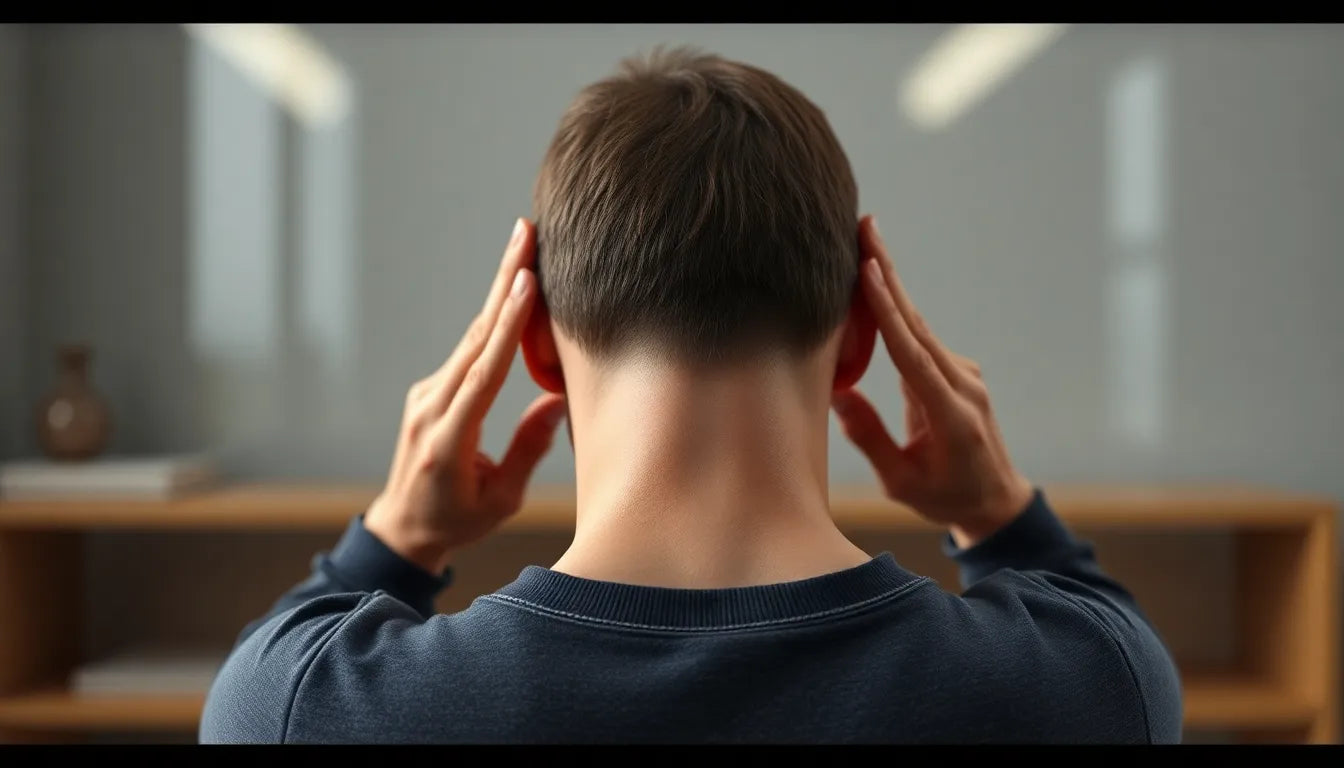In today's fast-paced world, poor posture is becoming increasingly common, with a staggering number of individuals experiencing spine-related issues. According to recent studies, approximately 80% of adults will experience back pain at some point in their lives, with poor posture being a significant contributor. This silent epidemic, often overlooked, not only affects our spine but also has broader implications for our overall health.
understanding posture and its impact
Posture refers to the way we hold our bodies while standing, sitting, or lying down. It is crucial for maintaining balance and ensuring that our muscles and ligaments function efficiently. Good posture helps distribute the forces of gravity through our body so that no single structure is overstressed. However, when posture is poor, it can lead to a host of problems, particularly for the spine.
The spine is designed to have a natural S-shaped curve, which helps absorb shock and maintain balance. Poor posture can disrupt this alignment, leading to increased strain on the spine. This misalignment can result in chronic pain, reduced flexibility, and an increased risk of injury. Over time, poor posture can also contribute to degenerative changes in the spine, such as disc herniation and osteoarthritis.
the necessity of addressing poor posture
Addressing poor posture is not just about aesthetics; it's a critical component of maintaining long-term health. When left unchecked, poor posture can lead to a cascade of health issues that extend beyond the spine. It can affect lung capacity, circulation, and even digestion, impacting overall well-being.
Understanding the mechanics of posture and its effects on the body is essential for prevention and intervention. By recognizing the signs of poor posture and taking proactive steps to correct it, individuals can prevent the development of chronic conditions and improve their quality of life. In the following sections, we will delve deeper into the mechanics of poor posture, its health consequences, and practical strategies for improvement.

Men's Posture Shirt™ - Black
Patented shirt that activates muscles and can relieve pain—ideal for posture improvement all day.

Women's Posture Shirt™ - Nude
Patented shirt for women to activate muscles, relieve pain, and enhance posture daily.
mechanics of poor posture and its impact on the spine
The spine's natural S-shaped curve is vital for absorbing shock and maintaining balance. However, poor posture can distort this alignment, leading to significant biomechanical issues. Common postural problems, such as forward head posture, rounded shoulders, and anterior pelvic tilt, exacerbate these distortions. Forward head posture, for example, places excessive strain on the cervical spine, leading to neck pain and potential nerve compression. Similarly, rounded shoulders can cause the thoracic spine to curve excessively, contributing to upper back pain and shoulder tension. An anterior pelvic tilt, often resulting from prolonged sitting, can increase lumbar lordosis, leading to lower back pain and potential disc issues.
muscle imbalances and their role in posture
Poor posture often leads to muscle imbalances, where certain muscle groups become overworked while others weaken. This imbalance can result in chronic fatigue and muscle spasms, particularly in areas like the neck, shoulders, and lower back. For instance, prolonged slouching can weaken the core and gluteal muscles while overworking the hip flexors and lower back muscles. Over time, these imbalances can lead to chronic pain and reduced mobility, further exacerbating postural issues. Addressing these imbalances through targeted exercises and stretching is crucial for restoring proper posture and alleviating discomfort.
health consequences of poor posture on the spine
Poor posture significantly impacts spinal health by increasing disc pressure and the risk of herniation. When the spine is misaligned, the intervertebral discs experience uneven pressure, which can lead to bulging or herniation. This condition often results in chronic back pain and, in severe cases, nerve damage. Over time, persistent poor posture can contribute to degenerative disc disease and osteoarthritis, conditions that can severely limit mobility and quality of life. Additionally, poor posture can lead to spinal stenosis, a narrowing of the spinal canal that can cause pain and numbness in the limbs.
systemic health effects of poor posture
Beyond spinal health, poor posture can have surprising systemic effects. It can impact lung capacity by compressing the thoracic cavity, leading to shallow breathing and reduced oxygen intake. Circulatory issues can also arise, as poor posture can impede blood flow, potentially leading to varicose veins and increased blood pressure. Digestive problems, such as constipation and acid reflux, may also occur due to the compression of abdominal organs. Furthermore, poor posture has been linked to headaches, fatigue, and even mental health issues, as it can contribute to stress and anxiety by affecting the body's overall balance and function.
aging and the importance of maintaining good posture
As we age, the consequences of poor posture become more pronounced. Conditions like spinal stenosis and arthritis can worsen, leading to increased pain and reduced mobility. Maintaining good posture is crucial for preserving mobility and reducing pain in older adults. By addressing posture issues early and implementing corrective measures, individuals can mitigate the effects of aging on the spine and overall health. Regular exercise, ergonomic adjustments, and mindful posture practices can help maintain spinal alignment and prevent the onset of debilitating conditions.
strategies for improving posture and spine health
Improving posture is not only about correcting how you sit or stand; it involves a comprehensive approach that includes ergonomic adjustments, exercises, and professional interventions. By adopting these strategies, you can significantly enhance your spinal health and overall well-being.
ergonomic adjustments for a spine-friendly environment
Creating a workspace that supports good posture is crucial, especially for those who spend long hours at a desk. Start by ensuring your chair supports the natural curve of your spine. Adjust the height so your feet rest flat on the floor and your knees are at a 90-degree angle. Position your monitor at eye level to avoid straining your neck, and keep your keyboard and mouse within easy reach to prevent shoulder tension. Consider using ergonomic aids like lumbar supports or standing desks to maintain a neutral spine position throughout the day.
exercises and habits to promote spinal alignment
Incorporating specific exercises into your routine can help strengthen the muscles that support your spine. Focus on core-strengthening exercises such as planks and bridges, which help stabilize your lower back. Shoulder blade squeezes and chin tucks can counteract the effects of forward head posture and rounded shoulders. Additionally, make a habit of taking regular breaks from sitting to stretch and move around. Mindful posture checks throughout the day can also reinforce good habits and prevent slouching.
professional interventions for posture correction
For those experiencing significant posture-related issues, professional interventions such as physical therapy or chiropractic care can be beneficial. Physical therapists can assess your posture and develop personalized exercise plans to address muscle imbalances and improve alignment. Chiropractic adjustments can help realign the spine and alleviate pain caused by poor posture. These professionals can also provide guidance on posture assessments and recommend specific treatments tailored to your needs.
frequently asked questions
What are the first signs of poor posture affecting my spine?
Common signs include back and neck pain, headaches, and visible changes in posture such as slouching.
Can poor posture really affect my overall health?
Yes, poor posture can lead to systemic issues like reduced lung capacity and digestive problems, as well as increased fatigue and headaches.
How long does it take to correct poor posture?
The time frame varies depending on the severity of the posture issues and the consistency of corrective measures, but noticeable improvements can often be seen within weeks.
Are there specific exercises to help improve my posture?
Yes, exercises such as planks, bridges, and shoulder blade squeezes can strengthen muscles and improve posture.
Is it too late to improve my posture if I'm already experiencing pain?
It's never too late to start working on your posture. With appropriate interventions and lifestyle changes, you can alleviate pain and improve your spinal health.
Kilder
- Spine Team Texas. (n.d.). "How Poor Posture Can Lead to Chronic Spine Pain." Spine Team Texas Blog.
- Orlando Health. (n.d.). "The Power of Posture: Improving Spine Health." Orlando Health Content Hub.
- National Center for Biotechnology Information. (2023). "Posture and its Impact on Health." NCBI.
- Brown Health. (n.d.). "Posture and How It Affects Your Health." Brown Health Be Well.
- Cleveland Clinic. (n.d.). "Posture." Cleveland Clinic Health Library.
- Hartford HealthCare. (n.d.). "Understanding Posture and Its Impact." Hartford HealthCare News.
- UCLA Health. (n.d.). "Ergonomics and Prolonged Sitting." UCLA Health Spine Center.
- Harvard Health Publishing. (n.d.). "3 Surprising Risks of Poor Posture." Harvard Health Blog.


















